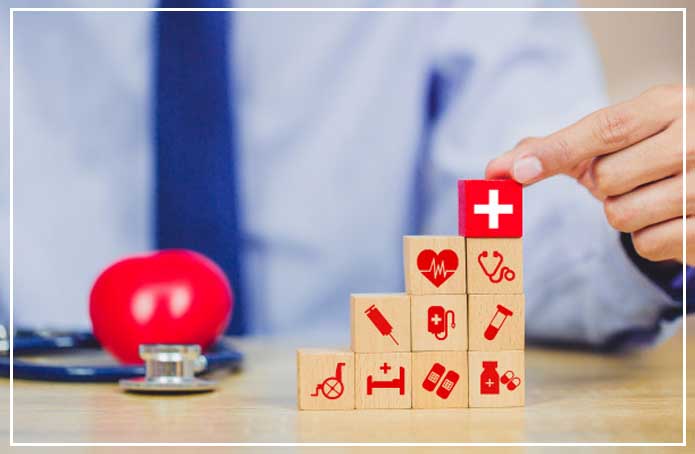Top 10 Healthcare Technologies of 2019 : Healthcare industry has evolved and reformed to a very large extent in the last couple of years. Traditionally, the healthcare industry has played it very safe when it comes to adopting new technologies simply because you cannot test technology on patients. However, this is about to change in the next couple of years and digitization will affect the healthcare industry hugely.
The healthcare industry is already pretty big and it is expected to grow to $210 billion by the end of 2020. Leading healthcare companies have already started adopting new technology. It is important for everyone to stay aware of the latest developments in the field of healthcare because, at some point or other, everyone needs it.
Here are the top 10 health care technologies that will become mainstream in 2019
Also, these technologies will continue to evolve so that a better version of them is available to the future generation. Let’s get started!
1. TELEMEDICINE: As the name suggests, people will be able to take medical advice from qualified personnel over the phone without going anywhere. The US is adopting this technology at a rapid scale. This technology will make access to diagnosis and treatment seamless. Also, patient data will be stored electronically which will come pretty handy when doctors want to forward your file to specialists for the second opinion.

2. CHATBOTS: Doctors receive a lot of emails from patients. Going through all of them is just impossible. This is where a chatbot comes pretty handy. Chatbots are backed by artificial intelligence capabilities and can answer a large number of questions at the same time. Chatbots will also offer a helping hand to the doctors in giving appointments and maintaining patient records. Chatbots have become a ubiquitous thing in the business world and have helped companies to save overhead costs to a large extent. The adoption of chatbots in the healthcare sector is expected to do the same.

3. BLOCKCHAIN: While the healthcare mostly moved away from paper-based records is still an industrywhich is ready for modernization via the blockchain. Current challenges in this industry includedkeeping patients records away from the hackers while allowing out rest access by providers.Blockchain will keep patient data secure and only professionals will be able to retrieve that data. Transparency of patient data will be maintained at all times and payment and remuneration system for the doctors will be better.

4. AR/VR/MR: Augmented and virtual reality has provided various solutions to healthcare problems. Students can learn medical procedures in a much more interactive and fun way. VR headsets are being used proactively to treat patients suffering from dementia and cognitive impairments. VR headsets have activities that aid the treatment of these defects.

5. MOBILE APPLICATIONS: There are many use case scenarios where a native mobile application can be very helpful. The mobile application can be used to book an appointment, submit previous health records and documents, and check test results. The burden on the medical staff is also reduced significantly. Using a mobile application, the patient can always stay in touch with the doctor. Mobile applications have huge potential to transform the healthcare sector completely.

6. VOICE SEARCH: Voice is becoming increasing popular and 6 out of 10 individuals make use of it on a regular basis. Most people want healthcare facilities within the reach of the home or workplace. Healthcare marketers have to optimize their platforms for such inputs. 20% of voice searches were related to healthcare in 2018, this number is expected to rise up significantly in 2019 and the coming years.

7. WEARABLE TECH: Wearable tech is one of the biggest trends today. Smartwatches are number one when it comes to wearable tech. A smartwatch with blood pressure measuring capabilities can be potentially life-saving. Apple launched Apple Watch 4 which has similar functionality. It was reported that a person was rushed to the hospital after the watch recorded abnormal blood pressure. Google is also working on similar technology. In the future, smartwatches will work collectively with the native mobile application and all the health data will be transferred to the doctor seamlessly.

8. INTERNET OF MEDICAL THINGS: 3.7 million medical devices are in today which are connected to and monitoring various parts of the body. These devices monitor medical conditions specific to patient’s disease and other systematic conditions such are heart rate, exercise, blood sugar etc. Using the data collected from these devices, patients receive individually-optimized healthcare faster with few doctor office visits and decreased overall time thinking about the disease. Healthcare professionals can monitor patient status, disease progression, and device performance. This allows for enhanced patient support and feedback on device design improvement opportunities. Patient families can be included in regular communications to help monitor patient wellness and the scope of human error will be reduced magnificently.

9. CENTRALIZED MONITORING OF HOSPITAL PATIENTS: Monitoring systems in hospitals make sounds. The medical staff is used to hearing these sounds on a regular basis and that too for long durations of time. They can become insensitive to these sounds after prolonged exposure. This insensitiveness is called alarm fatigue and can lead to inappropriate attendance to patients when they need it. Centralized monitoring can reduce the burden on medical staff while monitoring all patients in the hospital using sensors and cameras. Medical staff is alerted immediately if a patient needs prompt attention.

10. NON-INVASIVE DIABETES MONITORING: Technology is in the works which would allow patients to measure their diabetes without any invasive procedure. Allegedly the sensors developed will monitor blood sugar level continuously without inserting anything inside the skin. Such technology will be ready by the end of 2019 and will help patients to treat diabetes better.























